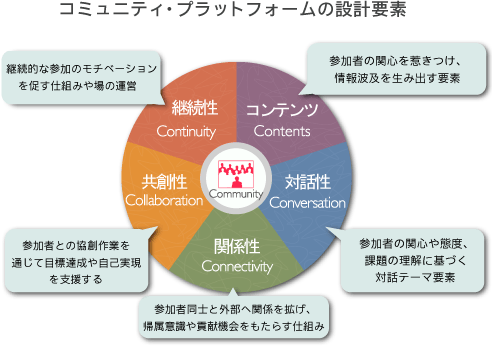Last time, we discussed how "adjective branding"—promoting image change through communication—has given way to the growing importance of "verb branding," which encourages participation and behavioral change. Building direct relationships with visible customers and fans, co-creating value together, and expanding ongoing relationships and ripple effects. This isn't just about corporate branding.
Shifting perspective, we see mass media itself rapidly evolving from mere content providers into community platforms that foster co-creation with users. Magazines, radio, and television are forming real-world user communities, turning participant activities into content to heighten empathy and expand their fan bases.
Media that successfully build community platforms possess brand power that moves people in real life—a power that cannot be measured solely by ratings or circulation figures, yet is highly attractive to advertisers. If this aspect could be made more visible, I believe it would enhance both media value and profitability.
For example, in the US and elsewhere, the "serialization" of content like dramas and movies has been advancing for some time. This isn't merely about content becoming repetitive; it's a crucial foundation for building ongoing relationships with viewers who have become fans, expanding the "stock" of topics and sharing mechanisms.
Some cases have successfully built brand recognition across borders by forming fan communities for programs with tens of millions of followers on social media. By extracting program content and encouraging user viewing behavior and information dissemination, they expand business opportunities like events.
 So, what elements are necessary to create a "community platform" that transcends mere "media"? In "Brand Community Strategy for the Social Era," we organize these into five key elements (see diagram above).
So, what elements are necessary to create a "community platform" that transcends mere "media"? In "Brand Community Strategy for the Social Era," we organize these into five key elements (see diagram above).
One element, of course, is compelling content that attracts participants and generates information diffusion. However, this alone is insufficient. Equally important are conversational elements (Conversation) that expand themes and topics of shared interest among participants, often intertwined with the content itself, and relational elements (Connectivity) that foster connections between participants or extend these connections to external individuals. Traditional communities tended to become closed groups, but the loose connections of networked individuals now offer new opportunities for platform expansion through people.
Furthermore, collaboration—working with participants to achieve goals and create value, generating feedback in the form of knowledge and content—is a crucial key to directly enhancing brand value. Finally, and perhaps most importantly, continuity is essential. The operation of the "mechanisms" and "spaces" that keep people participating in the community and sustain their motivation and interest can, in some cases, be a more important element than the content itself.
Why not consider whether the brands or media you're involved with could expand their value and business opportunities as community platforms by strengthening these elements?
※Diamond Online features a discussion article introducing various case studies related to this topic. Please take a look if you're interested.

 So, what elements are necessary to create a "community platform" that transcends mere "media"? In "Brand Community Strategy for the Social Era," we organize these into five key elements (see diagram above).
So, what elements are necessary to create a "community platform" that transcends mere "media"? In "Brand Community Strategy for the Social Era," we organize these into five key elements (see diagram above).
